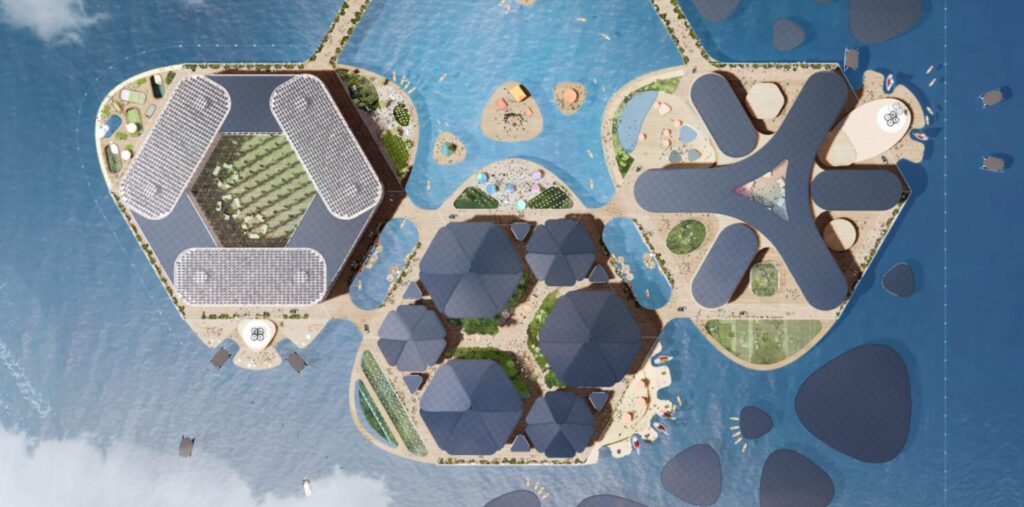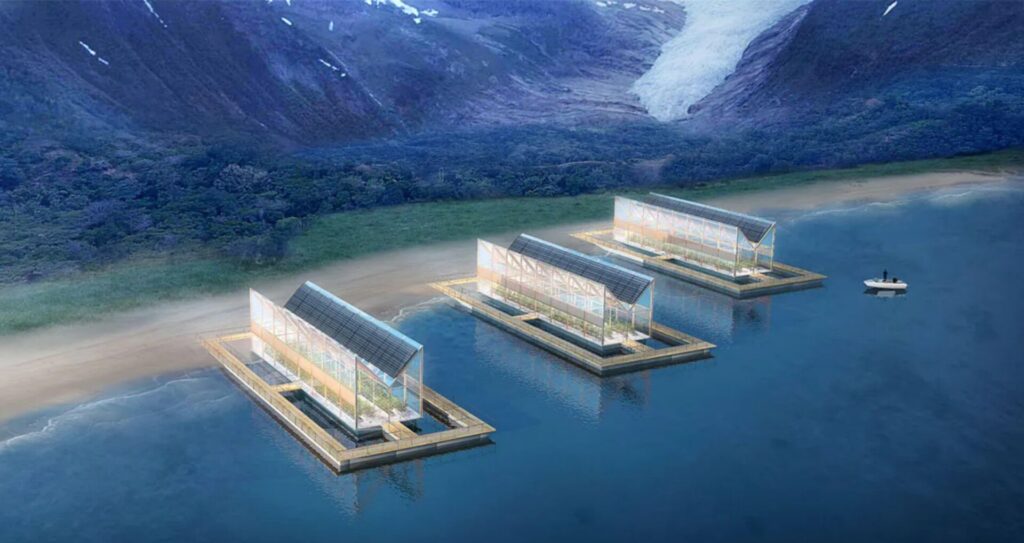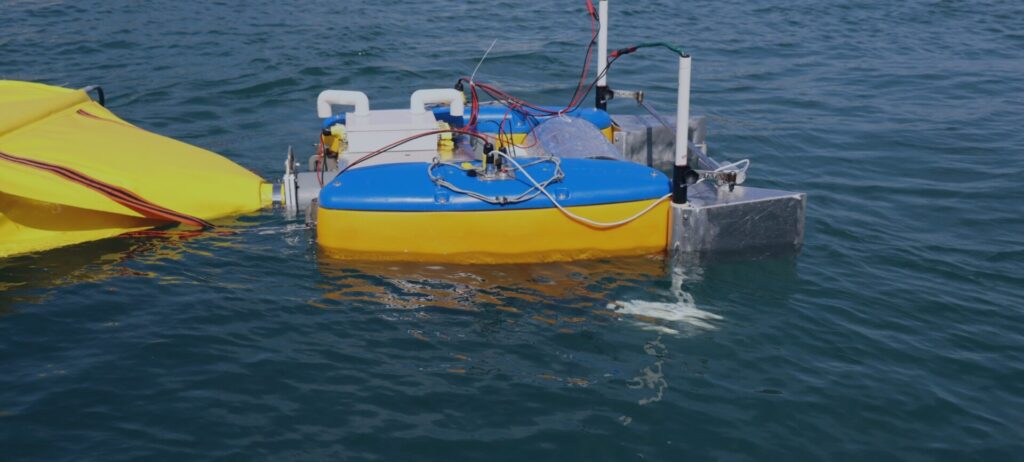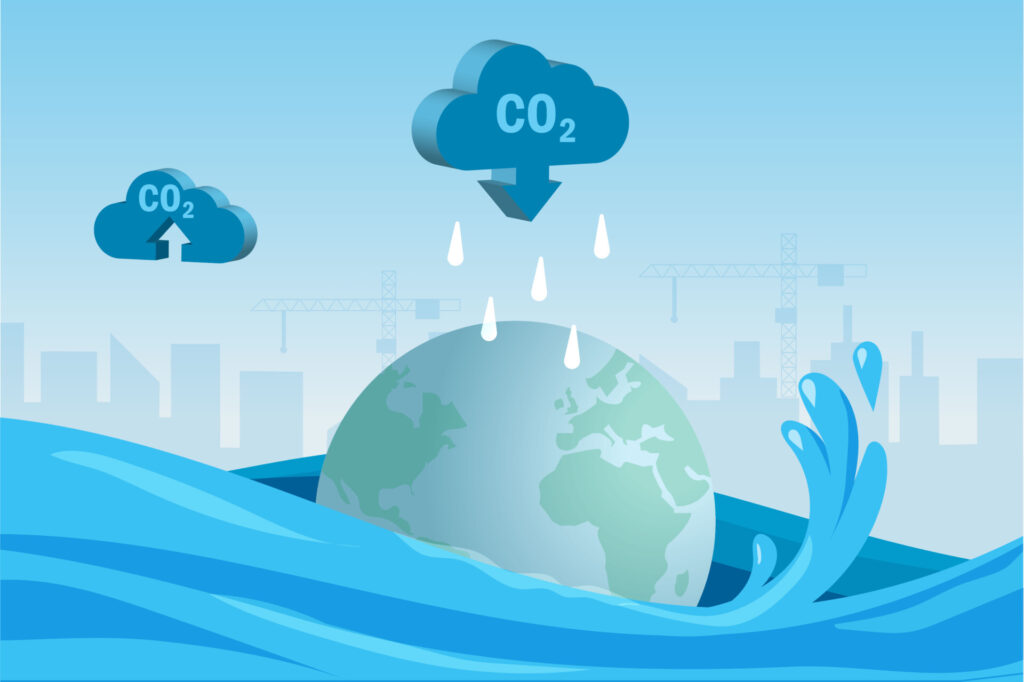


You’re ready to go.

The Earth’s temperature is rising, and sea levels are rising. For example, the tiny Pacific nation of Tuvalu is experiencing a sea level rise of 5 millimeters per year, leading to the complete submergence of two of its islands. However, should we abandon the oceans? No, quite the opposite. We should consider making the ocean our new home. With the ability to construct buildings and roads on the vast expanses of the sea, enjoy delicious food in restaurants, unwind in maritime parks, and truly “live and breathe” there, the ocean could become our last refuge. However, for the sea to truly become our home, there are several prerequisites to consider.

Food: Floating farm
You can grow crops at sea! Japan’s maritime architecture startup ‘N-ARK’ suggests building a floating farm where you can actually harvest tomatoes, radishes, lettuce, and more. You don’t have to worry about your vegetables tasting salty because they’re built to resist the salinity of the sea. Even fetching water is simple. The water is neutralized to retain nutrients and minerals, which are then used as fertilizers in seawater farming. If floating farms were to become a reality, we might be able to pick super medicinal strawberries grown in seawater, bake delicious cakes, and enjoy teatime with seawater coffee.
Mobility: Amphibious vehicles
Take a car, take the ocean. You’ll need transportation to get from one house to another on the sea. Instead of having to swim or sail your boat, you can drive a small electric car to get there quickly and easily. This car was developed by ‘FOMM,’ a company based in Japan. The original idea was to create an underwater electric vehicle that could float on water so that it wouldn’t sink in floods, tsunamis, or other water damage. (It uses a motor that attracts and expels water to propel it forward.) What would be your dream car to drive on water?
Infrastructure construction: Underwater robots
Inspecting infrastructure, such as bridges supporting maritime cities or cables laid on the seabed at great depths, is a task that humans cannot perform. This is where autonomous underwater robots come into play. ‘BeeX,’ a Singapore startup, has developed a small robot capable of autonomously navigating the ocean and protecting underwater infrastructure. Equipped with cameras, the robot can accurately perform underwater inspections and collect data. These robots will also play a significant role in the construction of essential social infrastructure for maritime cities, including bridges, tunnels, and roads. Let’s keep an eye on these ‘ocean rovers’.

Cleaner: Trash-scavenging robots
Before humans can establish settlements and live in the ocean, we must first clean it up. The oceans are already heavily polluted with plastic waste from human activity. To make matters worse, accidental oil spills have made fish sick and destroyed ecosystems. To prevent further pollution from spreading, a robot called KOBOT, developed by the Korean company ‘KOAI,’ has been created to collect plastic and filter out oil. It’s essential to remember that even with robots to clean up our trash, we still bear the heavy responsibility of avoiding the repetition of tragic events in the oceans once we start living there.

Carbon capture: Artificial plankton columns
Did you know that humans exhale a whopping 37 billion tons of carbon dioxide every year? We often talk about capturing carbon from the air, but what if we focused on removing carbon from the oceans instead? The surface of the ocean contains 40% of all carbon dioxide. A South Korea’s startup called ‘BlueCaBorn’ has developed an artificial plankton column that can absorb carbon dioxide and turn it into calcium carbonate through photosynthesis. You can simply place these artificial plankton in a body of seawater, and they will capture carbon on their own. With a generator running underwater and using fossil fuels, the column could become massive and serve as an ocean landmark.
The world’s first maritime city is on the verge of becoming a reality as many Asian startups are working on human migration to the sea. In Busan, South Korea, a city surrounded by the sea, UN-Habitat and several companies are collaborating on the Oceanics Busan project. The concept is for an innovative city that is self-sufficient in energy, water, and food, recycles resources, and is adaptable to sea level rise and climate change. If all goes according to plan, it will be completed in 2030. What are you doing? Let’s get ready to jump into the ocean.

